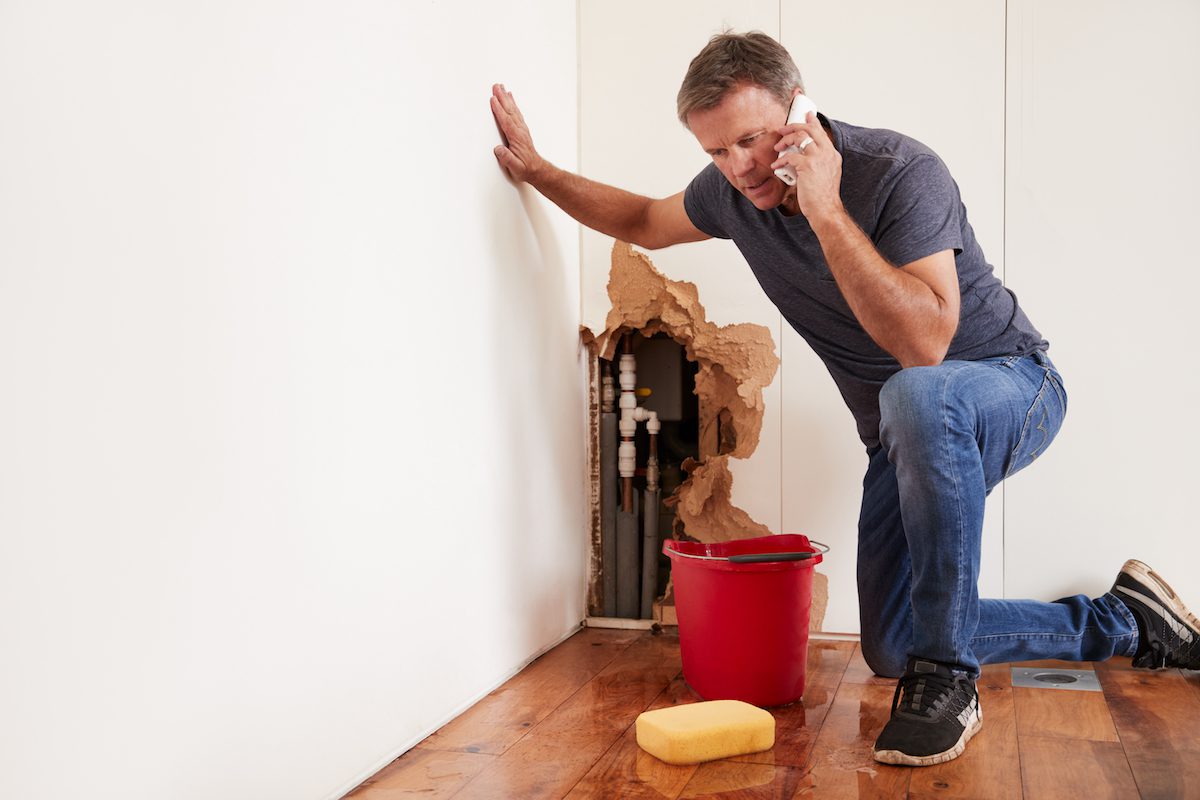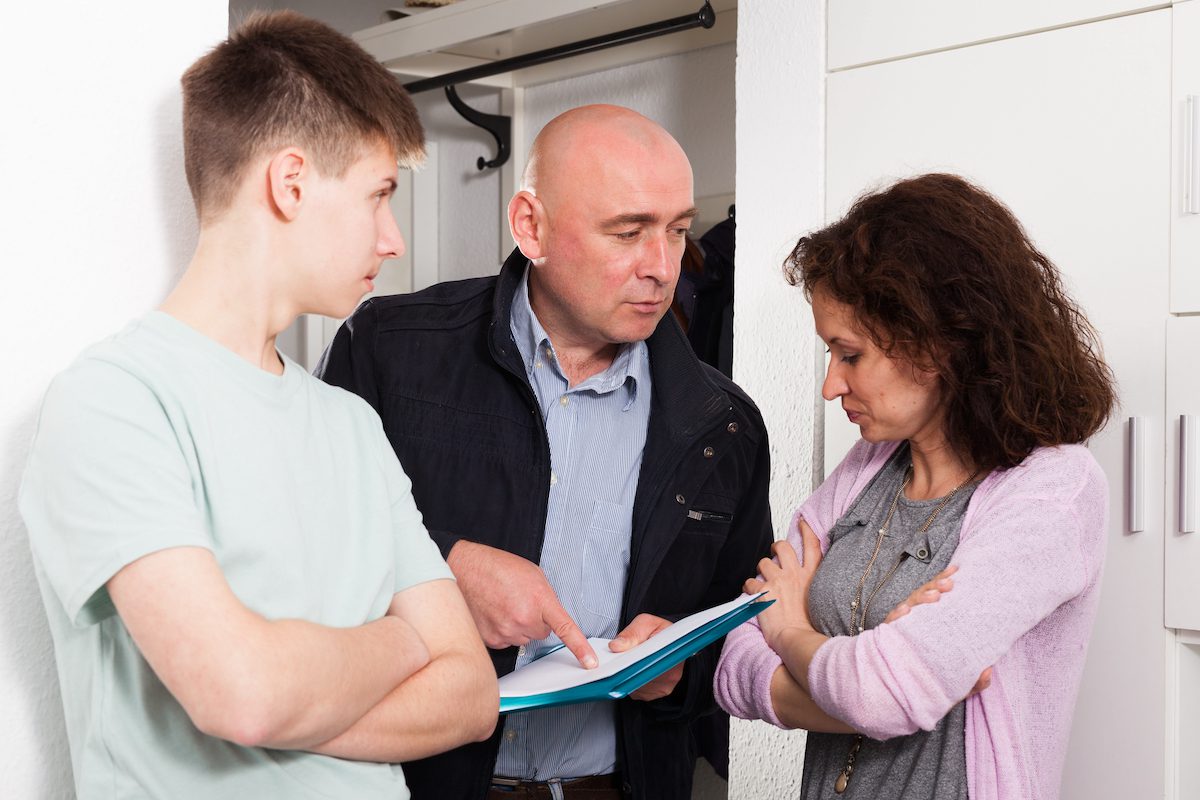15 Basic House Rules To Include in Any Rental Agreement
The relationship you have with your renters begins and ends with the rental agreement. This is where you establish the boundaries of this relationship and the rules for renting a house.

As you think about the rules for renting a house, you should concentrate on reasonable choices that protect your property. These “house rules" belong front-and-center, as clearly defined elements in your rental agreement. This way, renters have a legal obligation to follow them.
If you're struggling to select your necessary list, consider these 15 rules for renting a house as a good starting point.
1. Paying rent
It may seem obvious that a tenant needs to pay rent. While they do understand that's part of renting, it's up to you to set the when and how. Making it a house rule allows you to specify the day rent's due (typically the first of the month), as well as the consequences for paying late. It also enables you to establish a grace period — if you're OK with having one — should extenuating circumstances come up.
Your house rule around rent should also include how you expect to get paid. If it's by check, list where it should get dropped off or mailed to and what the postmark date must be. If you use an online service like RentPay to collect rent, include the details in the lease.
2. Renewing the lease and giving notice
Thirty days is the standard when it comes to giving notice as a renter. This includes both the desire to renew a current lease or move out. Establishing this standard as a house rule helps keep things consistent. It makes the tenant aware from the outset how they should proceed when the end of their lease gets close.
You should also notify tenants, in writing, when it's time to decide whether to renew or not. This gives you an opportunity to alert them to any changes in the rental terms.
3. Breaking the lease
For this important rule for renting a house, you need to specify the consequences should a tenant break the lease. It can create a huge inconvenience for you, no matter what part of the lease they're ignoring, so get ahead of the situation with your house rules.
First, define consequences for different types of lease-breaking. What does it look like if they don't pay rent for a few months? What happens if they bring in pets when they're not allowed, get too many noise complaints or don't maintain the property properly? What happens if the tenant wants to move out early?
Refer to state laws first to be safe, then decide what reasonable consequences you want to apply to each situation. What leads to immediate eviction? What's OK with proper notice? What requires the tenant to pay a penalty?
4. Requiring renters insurance
You don't have to require tenants to have renters insurance. Ultimately, it protects your tenants and their stuff, but it also takes perceived responsibility off you should something happen. Requiring renters insurance as a house rule means you won't have to field angry calls should a renter's property get damaged. They'll have the proper channel of an insurance agency to go through instead.

5. Dealing with damages
This is more about making tenants aware of what happens if you find damages after they move out than anything else. You're basically reiterating standard procedure, but doing it this way doesn't leave any room for them to disagree.
The house rule should stand that, if you find any damage to the property — beyond normal wear and tear — upon your move-out inspection, the money to make the repairs will come from the security deposit. You'll provide the tenant with an invoice specifying what the money went to fix, but will not return the full deposit.
6. Making maintenance requests
To keep track of maintenance requests that come in from renters, you'll want to set up a process that works best for you. As one of the rules for renting a house, detailing this process will help your renter react appropriately when something breaks or gets damaged.
Your house rules around maintenance can include a list of what types of issues they should contact you for, as well as what's considered an emergency. Also, include how best to contact you and how quickly you'll respond.
For example, you may want to set up an email account specifically for maintenance requests that you'll respond to within 24-hours for regular requests, but require tenants to call you when it's an emergency.
7. Maintaining general cleanliness and upkeep
This is as much a chance to list your expectations of the tenant as the right place to specify who cares for what. If your property has a yard and/or front lawn, you can not only designate who keeps the grass mown, but insert a house rule on the expected appearance of the lawn to align with general upkeep.
House rules in this area can also include specifics like whether it's OK to park cars on the grass, how to handle trash and what's OK (and what's not) when it comes to the back patio or deck.
8. Having pets
It's up to you whether you want to allow pets in your rental property. Either way, you need to establish a pet rule. It can be as simple as no pets are allowed. That saves you the trouble of dealing with pet wear and tear like stains and smells.
If you want to allow pets, your house rule needs to be specific. Include parameters related to:
- The number of pets allowed
- What types of pets are OK
- Whether you have any breed restrictions
- The pet fees associated with bringing in animals
Think beyond cats and dogs when writing up this house rule, too. Would you want fish, hamsters or birds on your property? Also, consider including a rule about keeping the yard free of pet waste if you're allowing dogs.
9. Managing noise
Not all neighborhoods have set quiet hours like apartment buildings often do. But if your rental home is close to neighbors, you may want to set some to avoid conflicts. As one of the rules for renting a house, quiet hours help keep your tenants respectful, while preventing loud events from going on late into the night.
Reasonable quiet hours usually start later in the evening and go through the very early morning.
Your house rule can include what qualifies as too much noise, too. Things like loud music and having noisy conversations outside are two prime examples.

10. Painting and picture hanging
Having a rental property that's a house often means allowing tenants to hang pictures on the wall, but it's really your choice whether they can paint or not. If you do allow either, or both, of these aesthetic changes to your rental, make it a house rule that the tenant has to return the walls to their original state before moving out. This means filling in large holes and painting the walls back to their original color.
11. Prohibiting illegal substances
Yes, illegal substances are against that law, but that doesn't mean your tenants won't automatically keep them out of the home. It's best to restate the fact that getting caught with illegal substances on your property has serious consequences, possibly even eviction.
Make it clear that "getting caught" doesn't mean only by law enforcement. If you walked past the house and noticed illegal drug activity or a neighbor notified you, that counts, too.
While discussing substances, you could also add in any applicable house rules that deal with alcoholic beverages or cigarettes. This would apply if you didn't want alcohol consumed or cigarettes smoked on the front porch, etc.
12. Using the house as a home
Having a job today is very different than it used to be, and many people now work out of their homes. While teleworking is perfectly acceptable, you may want to stick in a house rule about running a business out of your home. This is helpful to prevent a tenant's customers or clients from coming in and out of your rental property all day long.
13. Subletting
First, check with your state subletting laws, but even if it's legally allowed, you may prefer to forbid subletting of any kind. It's not a bad idea since when a tenant sublets, you may miss out on vetting the person moving into your property, or reviewing the sublet agreement they sign.
If you do decide to allow subletting, create a house rule that gets you involved in the process. You can require that requests to sublet get submitted to you in writing and that you prepare the sublet agreement. You're basically saying subletting is OK with your approval.
14. Inviting a roommate to move in
The same rules can apply to a current tenant wanting to bring in a roommate. All good rules for renting a house keep you involved as the landlord when it comes to new people living on your property. If you want to allow roommates to come in mid-lease, make it a house rule that they must sign a lease, as well. You may also want to specify that you have the right of refusal when it comes to potential roommates. They should expect to undergo the same vetting process as your original tenant.

15. Violating the rules for renting a house
There's no blanket consequence for violating a house rule, but your rule list should wrap up with one more guideline that drives home how serious it is to break any. Make sure you've included repercussions in every rule and then remind tenants that they're all hard and fast consequences.
Make the rules matter
Creating rules for renting a house doesn't make you a taskmaster. Most of them are common-sense rules that enable you to protect your property and have a good relationship with your tenant. With a strong list of house rules, you won't have to constantly worry about your tenants' behavior, and they'll know how to handle themselves while living on your property.
